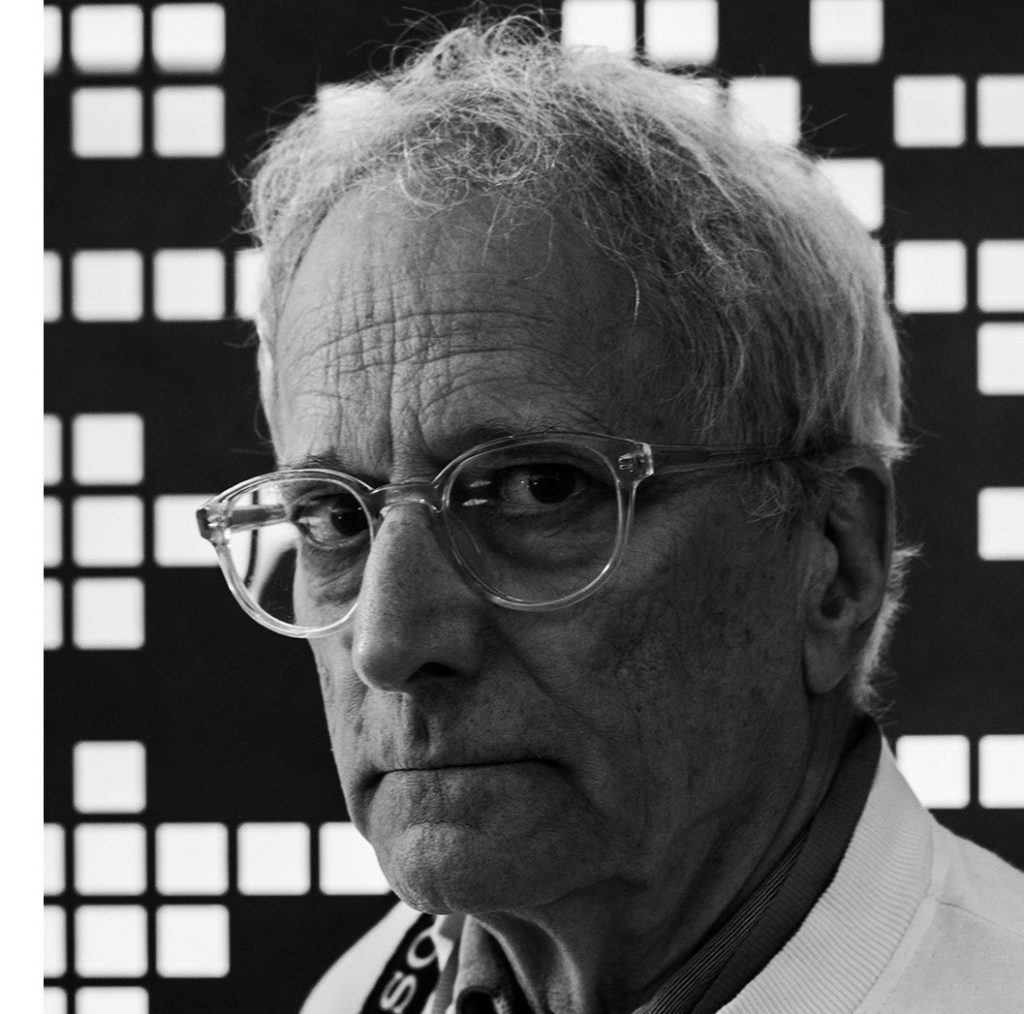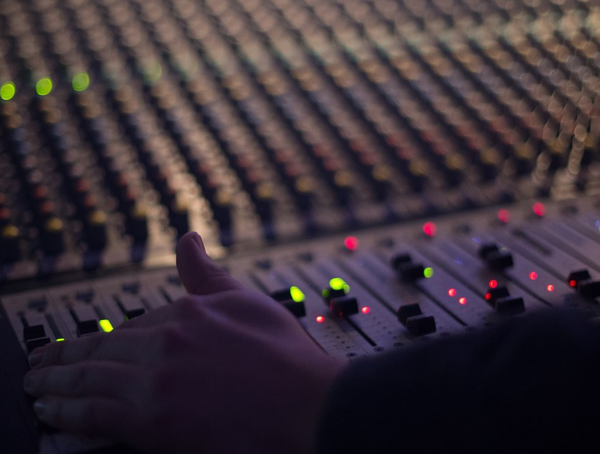David Burnett is a photographer who has covered an incredible array of events found in the history books — from the Vietnam War to the fall of the Berlin Wall and more than a handful of Olympic games. I met Burnett at the Atlanta Photojournalism Seminar where he spoke about his career and what he was excited about for the future of photojournalism. Burnett has worked for most of the titans of the industry, including The New York Times, National Geographic, Life, and Time magazine. He grew up in Utah where he spent summers working with the local newspaper as a photographer and developed his love for the art of photography.
(This interview has been edited for length and clarity.)
So you shot the cover of the S. E. Hinton book, The Outsiders.

I did, well, probably in a reprint but there was a little window a couple of years in the early 90s when I was doing some work on movies, and it was a lot of fun and it was all these kids who no one had ever heard of — Tom Cruise, Emilio Estevez, Ralph Macchio, Rob Lowe. They were complete unknowns. So, it wasn’t a huge ego issue. I mean, I have a funny picture; I got them all onto the back of a pickup truck, and they all flip me off at one point and I got a picture. But I have a shot with them in that truck staring up at me. It’s a pretty good picture and I made it into a shower curtain. It’s a pretty great shower every time you walk by the bathroom you want to say hi to the boys.
What kind of interest did you find in shooting film, stuff like that or shooting behind the scenes?
Well, it was the paycheck, I’ve almost never done anything just for the paycheck and that paid better than magazines, but usually, you didn’t have a lot of options to resell the work. So, you kind of wanted to make the money upfront.
One of my favorite pictures from that era is, there was a movie called “The Babe” about Babe Ruth with John Goodman. We were briefly in Wrigley Field, but then we went to a town in southern Illinois that had a really nice old baseball field. I got him just kind of sitting there like a grumpy guy with a bat on his shoulder. And there’s that very famous Babe Ruth picture. And I was like that’s what I was trying to evoke.
But it was fun work just because you had talented people and they were producing interesting products.
Do you get the same satisfaction from DSLRs that you do from film cameras?
You know, my friend Dave Kennerley when we were all beginning to shoot digital. He said, “Well, the one great thing about digital is you know right away when you screwed up.” And in fact, that is pretty true. When you shot film, you never absolutely knew that you had it or you didn’t. I mean, you probably could be more sure if you had missed it then to be sure that you had nailed it, and it still has to go through this rewind and then you’re holding your fingers and you still have to put it through this whole chemical process to even see if you have a picture. It made you a very different kind of photographer. That’s something I should talk about today but everybody now is so glued into looking on their screens and having this zero lag time between shooting it and verifying it. That, I think, almost everybody is probably a little sloppier as a photographer because you can definitely take more chances when you could pull 1000 images out of an SD card from a game. When you were shooting film, you had to take into account this whole lack of certitude. And I don’t know exactly how it made us different photographers, maybe not better necessarily, but I think we were a little more disciplined.
You know, nowadays you have to really overshoot to run out of space. You know, you have a 1200 picture card. I mean, give me a break there. If you don’t get one, if you can’t, it’s no longer an excuse. So many excuses have died with this new technology. Now, you have to actually go be a photographer. And that is a major difference from the time that you were at least 50% of the time, a technician. And so, you know, it’s opened it up to a lot of people who had an artistic eye but couldn’t focus. They are like, “What do I do with a light meter?”
Do you miss the art form behind developing film?
Here’s what I miss. Like spending a day on a political campaign and arriving at the hotel at seven o’clock and just leaving an envelope of film at the front desk and going to go have dinner, and maybe talk to a staff person like, “Hey, what’s doing tomorrow that we could work something out,” and no one has time for that anymore because you got to go back and do your last edit. Even if you’re a fast editor, you’re never fast enough.
Now it’s like, everybody wants everything immediately. And so the new camera, Sony, I don’t really know how it works, but what I know is they incorporated into it a whole Wi-Fi component that the sports guys and the agency guys really needed to just be able to preset it up for whatever. Either through your phone or through a Wi-Fi in the stadium or something and in your shoot, sequence, and metadata and then while they’re bringing the ball back to scrimmage you kind of look through and mark that one and hit send and away it goes. That’s not something that I really have to worry about or engage in.
Your Olympics coverage is pretty unparalleled.
Well, that’s very nice of you to say that I mean, I have taken a chance on trying to shoot things differently a few times. And just reminded me of a picture I gotta get for the show. What I loved was the fact that when I was doing the work at Time magazine in the 90s and the early 2000s, if I got something, they would use it. That was a gigantic plus because sometimes you just shoot it and you have something you think is okay and it sits in a drawer and never gets used. But this stuff really got a great play. And you know, at one point I remember one of the editors called me and I had done a pre Olympic showcase of American athletes or something and he called us late said, “Well, you did it again, you got 14 of my pages and I’m always a little begrudging to have to give that much up to pictures but you know, you did a good job and the stuff looks great.” So anything that gets a word guy to admit that he liked the pictures was you did something right even if it was by accident.
What are some of your favorite moments over that coverage?
Well, the big deal was being at the ‘04 games and deciding to leave the finish line and go just kind of wander down and then as I’m walking down the track, I see a bench with two guys on it. For me to sit down, and I just said, “Hey, you guys got room for one more?” And he said, “Yeah, come on over.” And that ended up being exactly where the accident occurred with Mary Decker. And that made that picture, which was kind of a big deal. It was, like, the biggest story of the Olympics. It was the thing that wasn’t supposed to ever be thought to happen, but it sure happened, and I had a good picture of it. So that kind of made me a sports photographer even though I’d always, ever since high school, it’s like I considered myself a sports talk radio, I was pretty bad. So and I’m not like the traditional I gotta get every great tackle or something. I almost never get the winners at the Olympics. I have a few winners. But mostly I’m looking for something that’s more poetic about what it’s like. I want you to feel a sense of what it’s like to be there watching it through my pictures, and you can be winners and losers and it’s all the same to me.
How could high school kids, young photographers, who are just trying to learn the art, how do they find the poetry in the scene?
You just have to find it yourself. You have to challenge yourself to do things that aren’t easy and to do things that are not the most obvious thing to do. Otherwise, there’s no point in any of this. If you’re just kind of going to go along and I’m just hoping to get a C or a C plus, then why do it, you know, go do something else that’s more productive. Because photography for whatever else it is and how much fun it is, it’s not the most lucrative in most cases. I think we all do it because we love doing it. And we love the act of photographing, and we love what comes out of that, which are the photographs 30 years ago today you are going to talk about.
How do you make photographs that match the level of significance for a historic event?
Pay attention and keep asking questions. There will always be a picture to be taken no matter how, if you miss the event, if you’re an hour late at the event, well, there’s some I used to talk about myself as an aftermath photographer. It was six months or a day or a year later and kind of retelling the story with different visual tools, but I don’t know you just have to never stop looking for a picture. That’s the whole name of the game that you’re always looking for a picture. That can sometimes get a little boring in terms of your personal life, you know, your family and maybe even your friends but family for sure.
Throughout your career, what personal sacrifice have you had to make?
Well, I was away a lot. I think my wife was definitely a proponent of that absence makes the heart grow fonder school of interpersonal relationships. She went to Florida last week and I was in Washington for a few days, she said, “I think he liked me better when we’re apart as well.” But you know, you miss things in your life when you decide to do things.
I was pretty much there for my kid. She’s now 33 and I’m sure she has moments when she would say wish dad had been there but I was there for most of the stuff that counted and instead of going to the first Gulf War, we took her to Disney World. That was pretty much a fair trade that was kind of like, you know, he’s gonna light the oil fields on fire, Saddam Hussein, and it’s gonna be really ugly. I think I’d rather be in Disney World with my kid and let the 25-year-old photographers handle the story.








